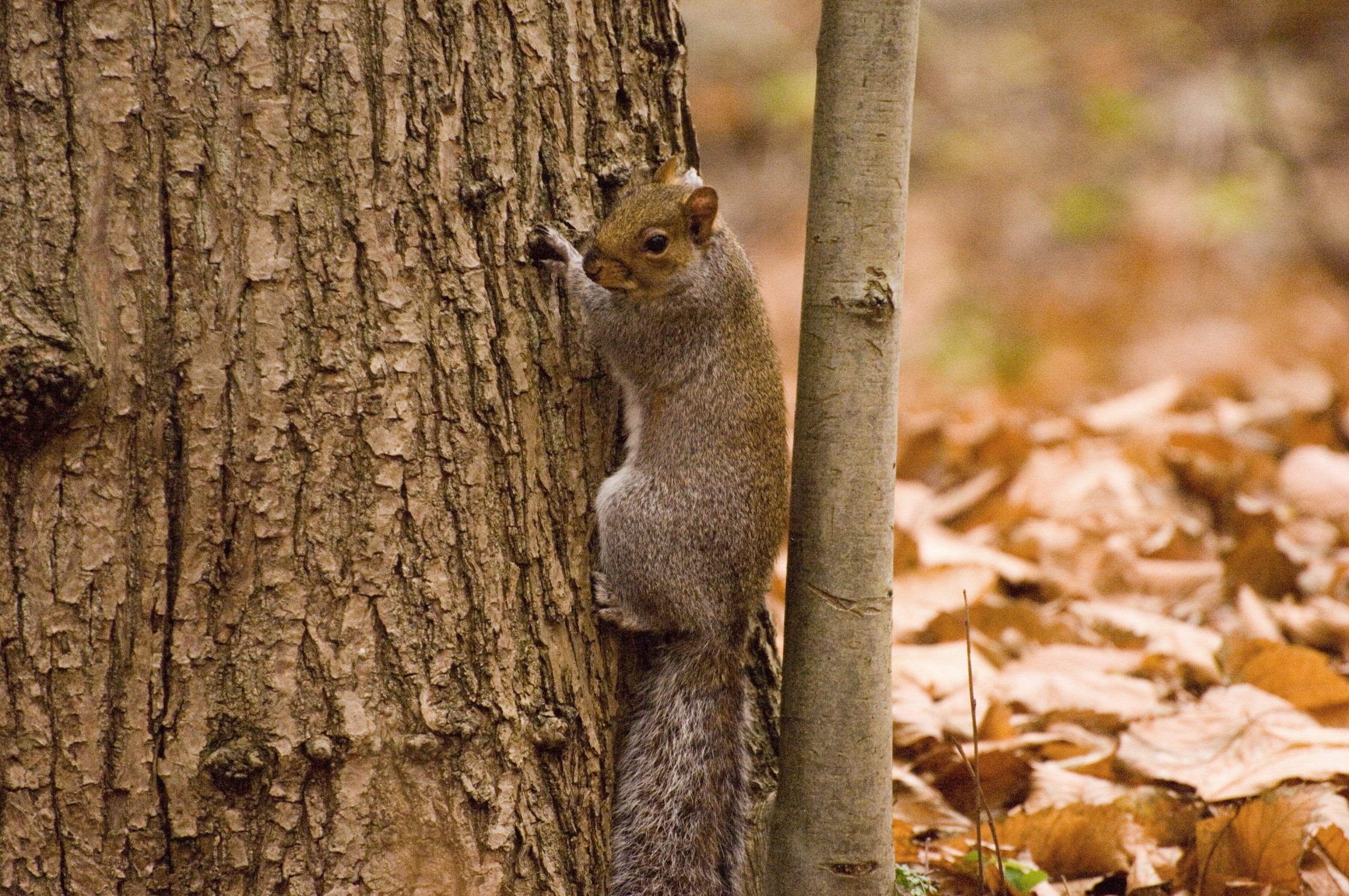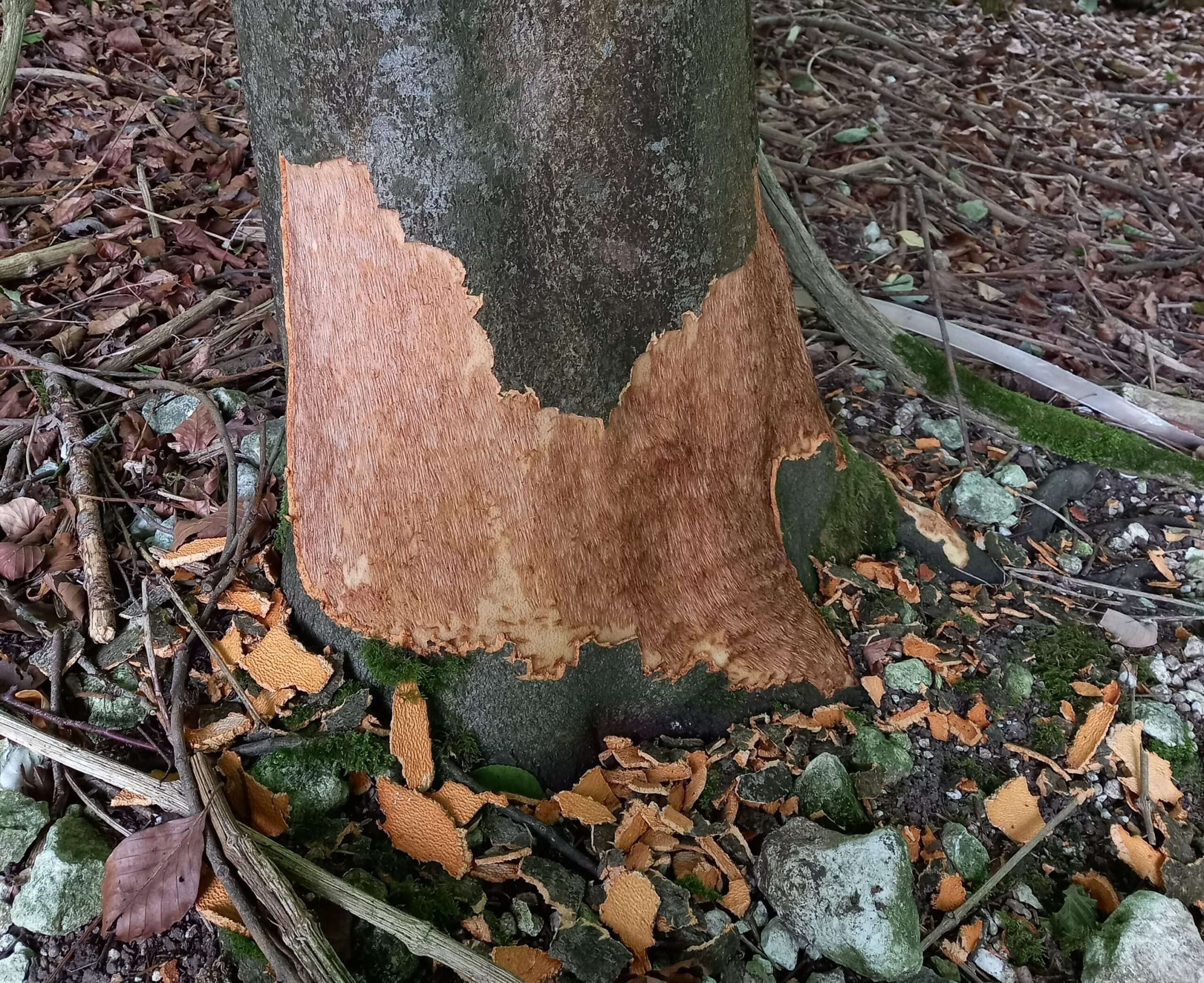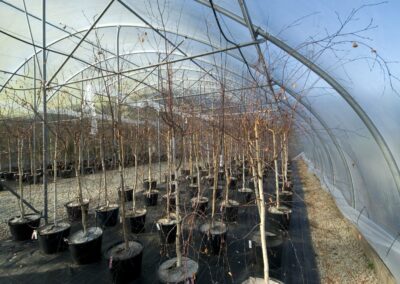Understanding grey squirrel bark stripping
Project leads Dr Cally Ham | Forest Research; Prof Patrick Doncaster | University of Southampton
Lead organisation Forest Research
Project status Active
Project funding 25-26 £150,723
Research outcomes Reducing the risk | Adaptation
Context
Bark stripping by grey squirrels (Sciurus carolinensis) costs the UK forestry industry up to £37 million a year in lost yield. This has led the Royal Forestry Society to identify grey squirrel damage as the “number one threat” to broadleaf woodland health and creation.
Efforts to reduce grey squirrel impacts mainly use lethal control, which is costly, resource-intensive, and often challenging to carry out, due to public opposition and conflicting management objectives across landscapes. Non-lethal alternatives remain limited due to a lack of understanding of the underlying causes of bark stripping behaviour.
This project will investigate the chemical deterrents that damage-resistant trees use against bark stripping and characterise the bark stripping behaviours on susceptible trees. It will also build on the ‘Understanding grey squirrel damage in UK woodlands‘ CFP Phase 1 PhD research project.
Research aims and objectives
Aim:
Understand the chemical defences available to trees, and the behavioural strategies available to squirrels.
Objectives:
- Identify which chemicals in tree bark help to protect against bark stripping by separating the complex mixture of chemicals found in bark into simpler groups or compounds which can then be tested separately to see which are least appealing to squirrels.
- 3D tracking of grey squirrel movement in tree canopies, to characterise bark stripping behaviours.
- Develop a machine-learning model to automatically recognise squirrel movements and body positions linked to bark stripping behaviour.
Expected outcomes
- Natural chemical compounds found in bark that defend trees against bark stripping will be identified and extracted.
- A functional collar capable of tracking bark stripping behaviour in 3D will be developed.
- A toolkit for studying grey squirrel behaviours related to bark stripping will be established.
- A stakeholder workshop will be held to discuss and plan non-lethal methods of controlling grey squirrel damage using insights into squirrel behaviour and tree chemical deterrents.
Further resources linked to this project
CFP Phase 1 Project (2021-2025)
See previous research on this topic from CFP Phase 1 project: Understanding grey squirrel damage in UK woodlands.
Bark stripped by grey squirrels.
Title image: Crown Copyright. Forestry Commission
Body image: Crown Copyright. Forest Research
Glossary & Key Terms
Bark stripping
A destructive behaviour carried out by grey squirrels (Sciurus carolinensis) where they remove tree bark in order to access the sweet, sap-filled phloem tissue beneath. Bark removal can severely impact tree health, lead to tree death and significantly reduce the economic value of timber.
Broadleaf
A category of trees that have wide, flat leaves rather than needle-like leaves. A category of trees that have wide, flat leaves rather than needle-like leaves. These trees are usually deciduous and lose their leaves in winter.
Grey squirrels (Sciurus carolinensis)
A non-native, invasive species originally from eastern North America. They were introduced to Great Britain in the 19th century and have since spread widely, now numbering over 2.7 million individuals across the UK. For more information on the management of grey squirrels, see Management of grey squirrels – Forest Research.
Lethal control methods
Control methods which are designed to kill pests such as grey squirrels.
Non-lethal control methods
Control methods which are designed to manage or deter pests such as grey squirrels, without causing death.
Share this project on social media
Related Projects
Our Partners
Social media
Explore
Newsletter
Contact
© 2022 Centre for Forest Protection. All rights reserved.



